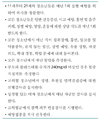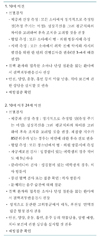Abstract
Programs that promote health through schools (school health programs), when delivered through schools that are themselves organized to promote health (health-promoting schools), are one of the essential means through which the twin goals of "Health for All by the Year 2000" and "Education for All" can be achieved. There are numerous evidences that school health programs are cost-effective and highly beneficial for adolescents themselves and communities they are belonged to. These days, the world's trend for school health programs has two directions. One is that to achieve best goals for school health, well - organized efforts are needed from governments, communities, schools, parents, and doctors. So, a new concept of 'comprehensive school health programs' is emerging. The other is that physicians should play an active roles not only for the school health promotion and school health education but also for the other steps including making policies, and advising community members who are concerned with school health services. Now, it is also time for Korean doctors to be an advocate for comprehensive school programmes and to participate actively in those programs.
References
2. WHO. Promoting health through schools. Report of a WHO Expert Committee on comprehensive School Health Education and Promotion. World health Organization Technical Report Series. 1997. 870:i–vi. 1–93.
3. Gold RS. The World health Organization: School Health Initiatives. J Sch Health. 1990. 60:370–378.

4. Education for all: purposes and content: roundtable themes I. 1991. Paris: UNESCO.
5. Primary health care. Report of the International Conference on Primary Health Care, Alma - Ata, USSR, 6~12 September 1978. 1978. Geneva: World Health Organization.
6. Allensworth D, Kolbe L. The comprehensive school health programme: exploring an expanded concept. J Sch Health. 1987. 57:409–473.
7. Perry C. Expert review of school drug abuse education programs. J Sch Health. 1986. 45:359–363.
8. Belcastro A, Gold R. Teacher stress and burnout: implications for school health personnel. J Sch Health. 1983. 53:404–407.

10. Report of the U.S. preventive services task force. Guide to clinical preventive services. 1996. 2nd ed. Baltimore: Williams & Wilkins;Ivii–Ixxiv.
10. American Medical Association. Guideline for adolescent preventive services(GAPS); recommendations and rationale. 1994. Baltimore: William Wilkins.
11. American Academy of Pediatrics, committee on practice and ambulatory care. Recommendations for preventive pediatric health care. AAP news. 1991. 7:19.
12. American Academy of Family Physicians. Clinician's handbook of preventive services: Put prevention into family practice. 1994. U.S. department of health and human services public health service.
13. McAnarney ER, Kreipe RE, Orr DP, Comerci GD. Textbook of adolescent medicine. 1992. Philadelphia: W.B. Saunders company;767–772.
14. Nader PR, editor. Committee on school health. American Academy of Pediatrics. School health: policy and practice. 1993. Elk Grove Village, III: American Academy of Pediatrics.
15. Bradford Bj. School health in pediatric residency training: 1994. Arch Pediatr Adolesc Med. 1996. 150:315–318.

16. Zenni EA, Sectish TC, Martin BN, Prober CG. Pediatric resident training in a school environment. A prescription for learning. Arch Pediatr Adolesc Med. 1996. 150:632–637.

17. Brindis CD, Sanghvi RV. School - based Health Clinics: Remaining viable in a changing health care delivery system. Annu Rev Public Health. 1997. 18:567–587.

18. Canadian Task Force on the periodic health examination. Task force report: The periodic health examination. Can Med Assoc J. 1979. 121:1193–1254.
19. Mackie JW, Oickle P. School-based health promotion: the physician as advocate. CMAJ. 1997. 156:1301–1305.
20. Yaffe MJ. Developing and supporting school health programs. Can Fam Physician. 1998. 44:821–829.
21. Barlow J, Stewart-Brown S, Fletcher J. Systemic review of the school entry medical examination. Arch Dis Child. 1998. 78:301–311.




 PDF
PDF ePub
ePub Citation
Citation Print
Print






 XML Download
XML Download